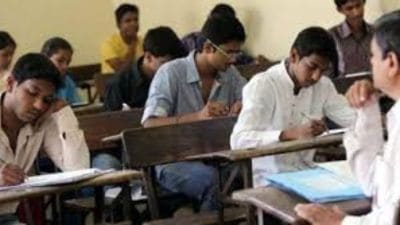- India
- International
Coping with coronavirus: Big challenge for India’s 37%— ‘internal migrants’
Jagdish (22), from Madhya Pradesh, does a mason’s work and is worried that even if the contractor gives money, that would be a loan, not relief.
 A self-run site with almost 200 migrant construction workers from UP, Bihar and Madhya Pradesh, accommodating men, women and children in several hutments in Delhi’s Uttam Nagar. (Express photo by Tashi Tobgyal)
A self-run site with almost 200 migrant construction workers from UP, Bihar and Madhya Pradesh, accommodating men, women and children in several hutments in Delhi’s Uttam Nagar. (Express photo by Tashi Tobgyal)
“It would be a very big government school when built,” says Kaushalendra Trivedi (45), a recent migrant from Gorakhpur, employed as a guard in Uttam Nagar in the national capital’s Rajkiya Sarvodaya Bal Vidyalaya. His family is five kilometres away in a makeshift home; he has been here for four days now, and as is his habit, to guard the place. This is a self-run site with almost 200 migrant construction workers from UP, Bihar and Madhya Pradesh, accommodating men, women and children in several hutments— people who have practically built Delhi, but cannot call it home when crises like the coronavirus lockdown strike.
“The Delhi people may get galla (foodgrain) as they have cards; we are not from here, we have nothing to show for. We have got nothing,” Trivedi says.
Follow Coronavirus LIVE Updates
The group of 60 from Damoh in Madhya Pradesh here is particularly restless. They were enrolled to work on the site just months ago, and while several have families here, many are divided, with children back home too. Some have their wives and children assisting in the work here, now stranded, with work having stopped. Lakhan Ahirwal has a towel tied around his face and while aware of the coronavirus fears, his worries are less about social distancing or soap, and more about the day to day living for which there has been no assistance so far. “Can you get us back home, our children call on the phone and there is nothing here for us.”
Neema (40) does manual labour, lifting and cleaning up after a day’s work, and manages to get Rs 275 per day as wages. But all that is not there now. She is particularly worried about basic staples, vegetables and grain prices shooting up. “Our thali has shrunk. It is potatoes and rice. Dal is a luxury, the younger people get a pao (250 gm) of dal occasionally. Vegetables which were Rs 25 a kilo until yesterday cost Rs 40 per kilo today.”
No one here, including the couple Poonam and Ram Singh from Saharsa in Bihar with their four children, wants to openly criticise their contractors as “they are themselves helpless or have gone back”. Poonam says they would make “Rs 1,000 each for the two of us every week, but no payment has come in this week”.

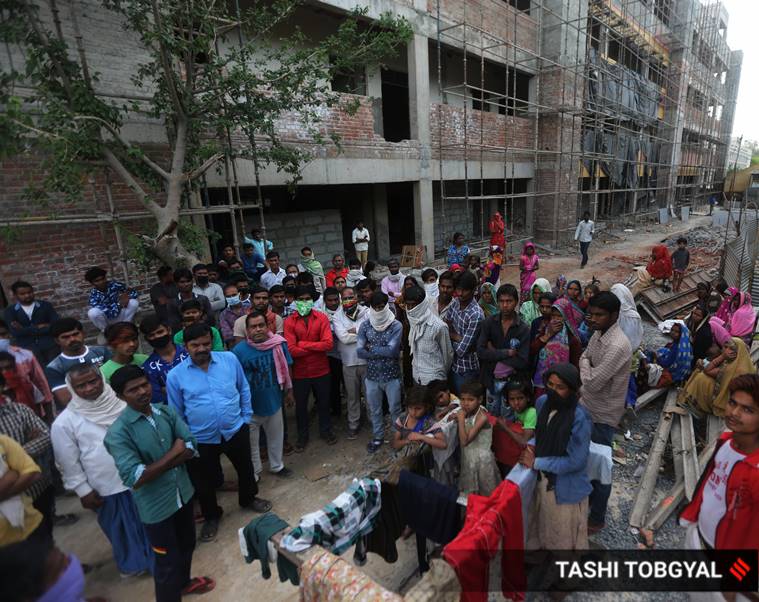 A large number of labourers from Bihar , Rajasthan have been stuck at a school construction site in Delhi’s Uttam Nagar due to the lockdown. (Express Photo by Tashi Tobgyal)
A large number of labourers from Bihar , Rajasthan have been stuck at a school construction site in Delhi’s Uttam Nagar due to the lockdown. (Express Photo by Tashi Tobgyal)
India, as per the 2011 census, records 45.36 crore or 37% of its population as “internal migrants”. The number has gone up steadily from the last census. There is little to regulate their working conditions and lives even during routine times, and the coronavirus has added dimensions to the extreme precariousness of being.
READ | No transport and no money, migrants take long road home
Sociologist professor Sanjay Srivastava, who has studied urbanisation closely, thinks it is important to focus on India’s own peculiar challenges: “In a country where 20% of the population are intra-national economic migrants, our policies are mainly geared towards those who are not. We are a much more mobile country than the West, and the idea that we can cut and paste strategies from elsewhere is little more than aspirational policy making. The epidemiological crisis will be compounded by a social one.”
Jagdish (22), from Madhya Pradesh, does a mason’s work and is worried that even if the contractor gives money, that would be a loan, not relief. “Woh sab to karz hoga na? Sarkar ne toh kuch nahi diya hai. We have a few days of ration left, that is all.”
 The group of labourers were enrolled to work on the site just months ago, and while several have families here, many are divided, with children back home too. (Express photo by Tashi Tobgyal)
The group of labourers were enrolled to work on the site just months ago, and while several have families here, many are divided, with children back home too. (Express photo by Tashi Tobgyal)
It was just two years ago, on March 19, 2018, when a Supreme Court bench comprising Justice Madan Lokur Deepak Gupta had made a strong statement on paying migrant construction workers their due: “We have been informed that under the Cess Act, more than Rs 37,400 crore has been collected for the benefit of construction workers, but only about Rs 9500 crore has been utilised ostensibly for their benefit. What is being done with the remaining about Rs 28,000 crore? Why is it that construction workers across the country are being denied the benefit of this enormous amount? These are some questions that arise in this petition — are the answers blowing in the wind?”
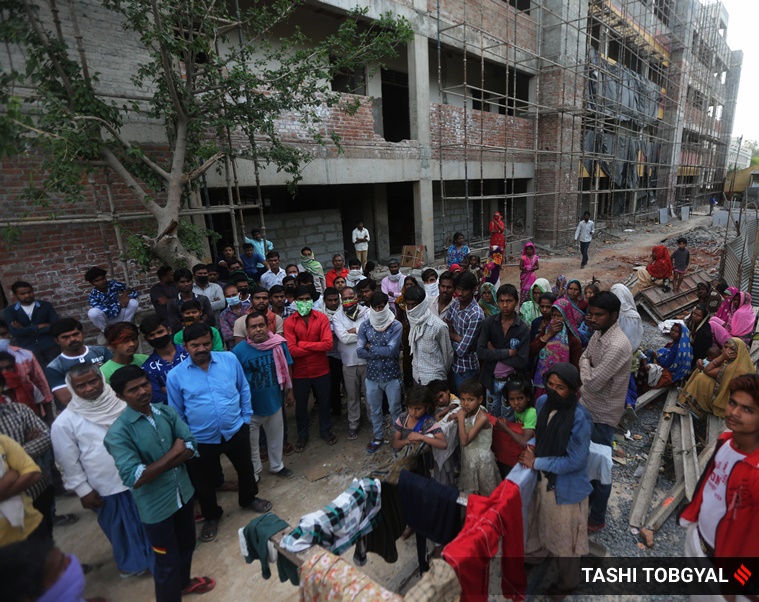 It was just two years ago, on March 19, 2018, when a Supreme Court bench comprising Justice Madan Lokur Deepak Gupta had made a strong statement on paying migrant construction workers their due. (Express Photo by Tashi Tobgyal)
It was just two years ago, on March 19, 2018, when a Supreme Court bench comprising Justice Madan Lokur Deepak Gupta had made a strong statement on paying migrant construction workers their due. (Express Photo by Tashi Tobgyal)
While electricity and some minimal water supply in the government school site is there, they say, conversations about soaps and hand wash and even social distancing appear to be from another world.
READ | Sitharaman unveils Rs 1.7 lakh crore package for poor: Top announcements today
Says scientist D Raghunandan, of the All India Peoples’ Science Network, working on public health issues: “Those who managed to flee to their original villages and towns a few days back anticipating the lockdown underwent harrowing journeys in overcrowded trains and buses, spent huge sums on last-mile journeys, possibly infecting countless others or getting infected on the way. Back home they face hostility and an extremely weak public health system. Those lakhs of migrant workers now stuck in Delhi find themselves in limbo, with no income or opportunities for work, lacking for food, and many without shelter unable to pay rent.”
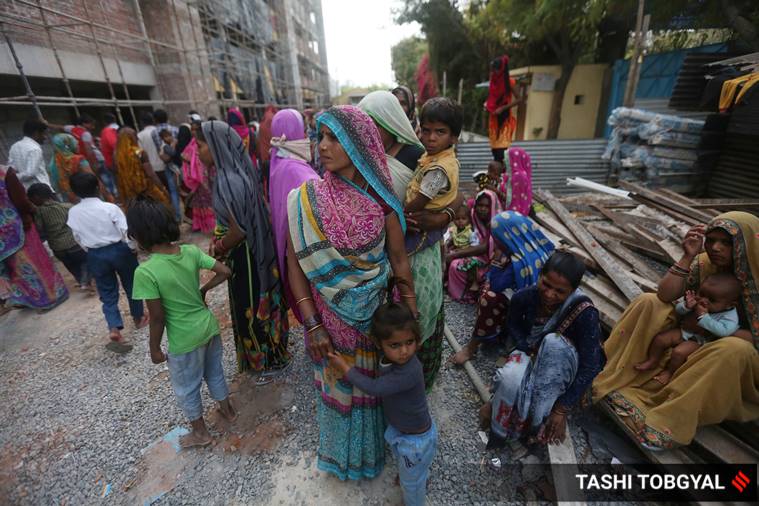 While electricity and some minimal water supply in the government school site is there, the migrants say, conversations about soaps and hand wash and even social distancing appear to be from another world. (Express photo by Tashi Tobgyal)
While electricity and some minimal water supply in the government school site is there, the migrants say, conversations about soaps and hand wash and even social distancing appear to be from another world. (Express photo by Tashi Tobgyal)
“Since it would be impossible to practise physical distancing in the limited and crowded temporary shelters being set up for them, they are also further exposed to infection. A better planned lockdown could have anticipated these problems. The central government is also yet to plan for income support for these workers and other poor in the unorganised sector, or announce any relief and welfare package.”
Mohammed Talib, (25) from Bareilly in UP, does tile and stone work and came to Delhi with many hopes just three months ago: “The money, along with the work, has stopped. So even if the stores around us are open, what can we do?”
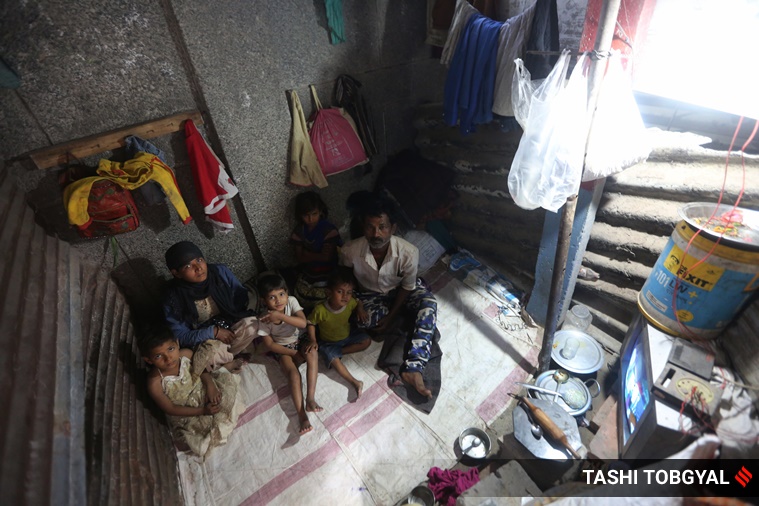 India, as per the 2011 census, records 45.36 crore or 37% of its population as “internal migrants”. (Express Photo by Tashi Tobgyal)
India, as per the 2011 census, records 45.36 crore or 37% of its population as “internal migrants”. (Express Photo by Tashi Tobgyal)
One of the women workers who deals with water work puts it succinctly: “Sabzi, chawal, mostly aloo, is being cooked, lekin kya karein, hum parades mean hain na. Can you help us get back?”
“Tackling the COVID-19 epidemic is not just a medical issue, but a multi-faceted socio-economic one, and calls for commensurate measures,” scientist D Raghunandan concludes.
Apr 24: Latest News
- 01
- 02
- 03
- 04
- 05











